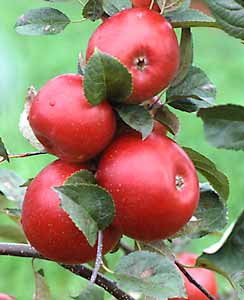export fruit iran buy fruit company
company fruit exporter from iran - import fruit all countryexport fruit iran buy fruit company
company fruit exporter from iran - import fruit all countryDragon fruits
Ecuadorian fruit shoppers feel the crunch
Fruit prices in the Ecuadorian market have reportedly seen sharp rises over the last week as a result of the country’s
recently imposed import tariff hikes.
Website Lahora.com.ec reported apples, table grapes, oranges, guavas and peaches had all been particularly affected, with the price of a box of 150 apples having risen from US$20 at the start of the year to US$30 now.
The price rises are said to be hitting fruit sellers in wholesale markets hard as sales have been limited.
“Normally, people prefer to eat Chilean apples, pears and grapes because they’re more juicy and have a better texture, and if they stop shipping them we don’t know if the apples from here will be able to meet the supply,” apple seller Patricio Urtea was quoted as saying.
Chilean apples are said to be one of the most popular fruits in the country, not just in wholesale markets but supermarkets as well.
“Lots of people have come to ask if we still have Chilean apples and if they’re still of good quality,” Urtea was quoted as saying.
“We are really worried that imports from other countries might stop, because then we would have to look for other distributors that might not even exist in this country.”
A wholesale market shopper, Miriam Tapia, reportedly said she didn’t know if the sellers were exaggerating their prices
prematurely, but claimed that she could before buy more apples and pears for a lower price.
Blackberry
21 best crops for your edible garden
The plants may be too tall (5 to 10 feet) for some small gardens. But a sweet corn such as ‘Kandy Korn’, ‘Sweet Symphony’, and ‘Silver Queen’ is worth growing in a sunny plot―you’ll never find a sweeter corn in markets.
Good enough to eat right off the plant when picked at peak ripeness. Sunset zones 1B, 2B-24, H1, H2.
Once standard sweet corn is picked its sugar changes to starch quickly. By rushing ears from the garden to boiling water, you can capture their full sweetness.
Apple Essentials
by National Gardening Association Editors
Planning
- Select resistant varieties to minimize apple scab and other disease problems.
- Apple trees are not self-fertile; plant at least one other variety that blooms at the same time. Flowering crab apples that bloom at the same time will also pollinate apples.
- Spring planting is recommended in central and northern areas. Where fall and winter weather is generally mild and moist, fall planting is successful.
- Buy dormant, bare-root, 1-year-old trees, if possible. Dwarfs and semi-dwarfs will bear in 3 to 4 years, yielding 1 to 2 bushels per year. Standard-size trees will start to bear in 4 to 8 years, yielding 4 to 5 bushels of apples.
Preparation
- Choose a site with full sun, moderate fertility, and good air circulation and water drainage.
- Apples will tolerate a wide range of soil types.
Planting
- When planting trees on dwarfing and semi-dwarfing rootstocks, be sure the graft union stays at least 1 inch above ground.
- Space standard trees 30 to 35 feet apart, semi-dwarfs 20 to 25 feet apart, and dwarf trees 15 to 20 feet apart.
- Surround each tree with a mouse guard before filling the hole completely.
- Water, prune, and mulch young trees right after planting.
Care
- Water young trees regularly, especially those on semi-dwarfing or dwarfing rootstocks, to ensure that the root system becomes well established.
- Renew the mulch periodically, but pull it away from the tree in the fall so mice don't nest over the winter and eat the bark.
- Begin training trees to their permanent framework in the first season.
- Prune bearing trees annually.
- See our article Fruit Pests and Diseases for controls of common apple pests such as apple maggot, plum curculio, green fruitworm, codling moth, fire blight, and powdery mildew.
- The harvest season ranges from midsummer to late fall, depending on the variety.
- To avoid pulling out the stem when you harvest, cup the apple in your hand, tilt it upward, and twist to separate it from the spur at the point of attachment.




